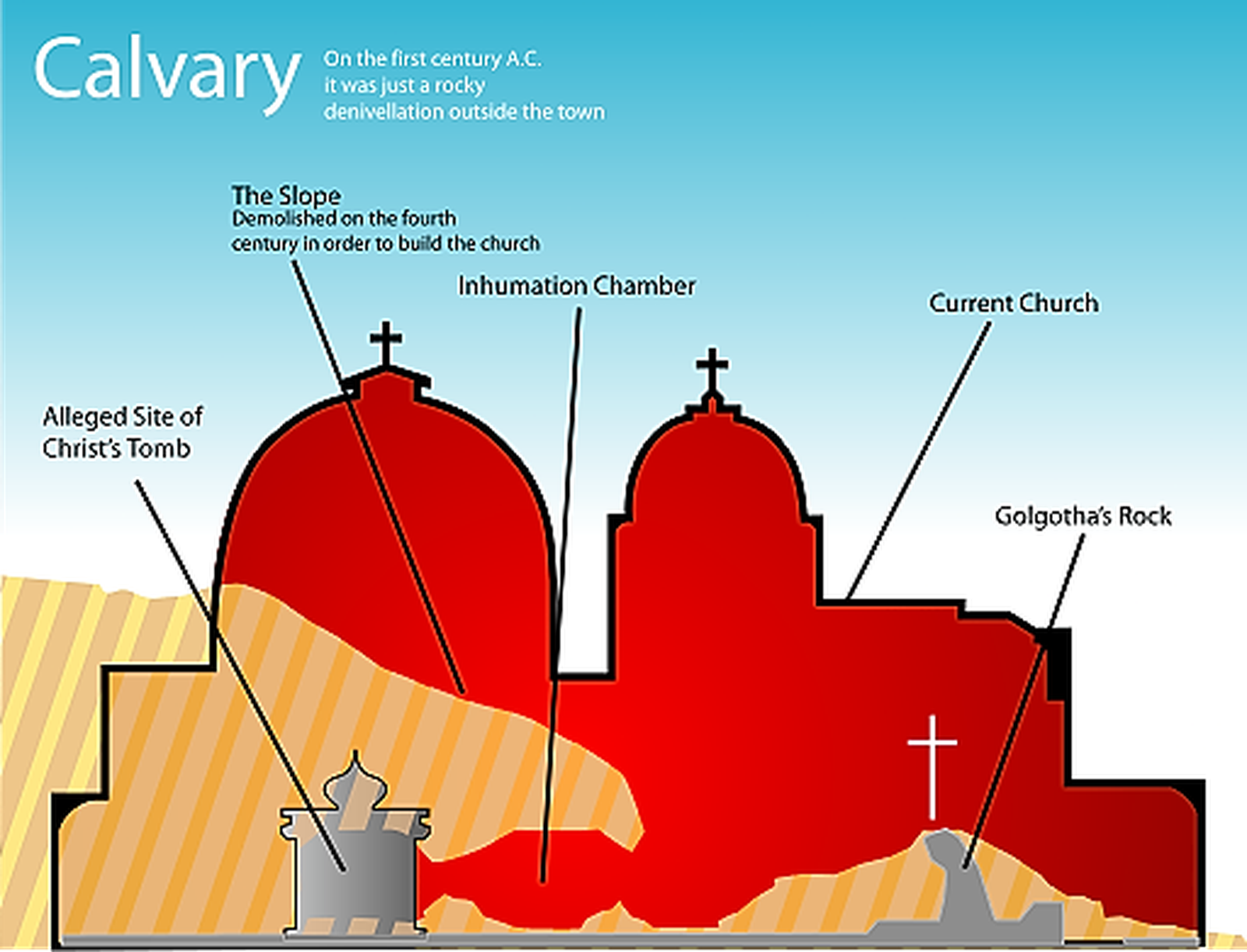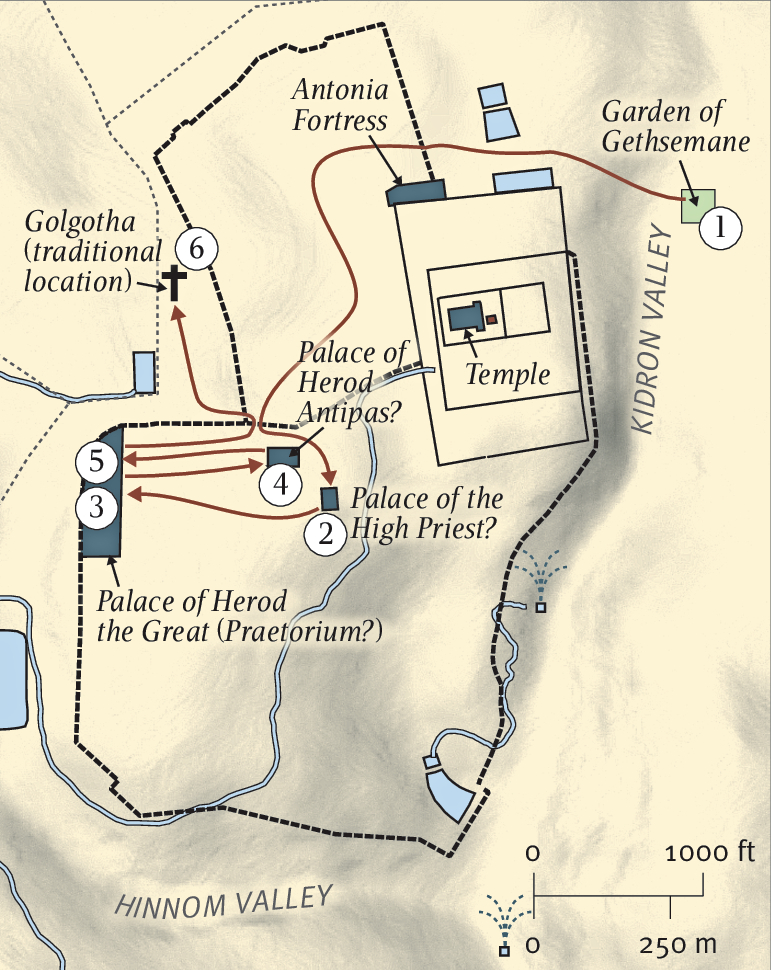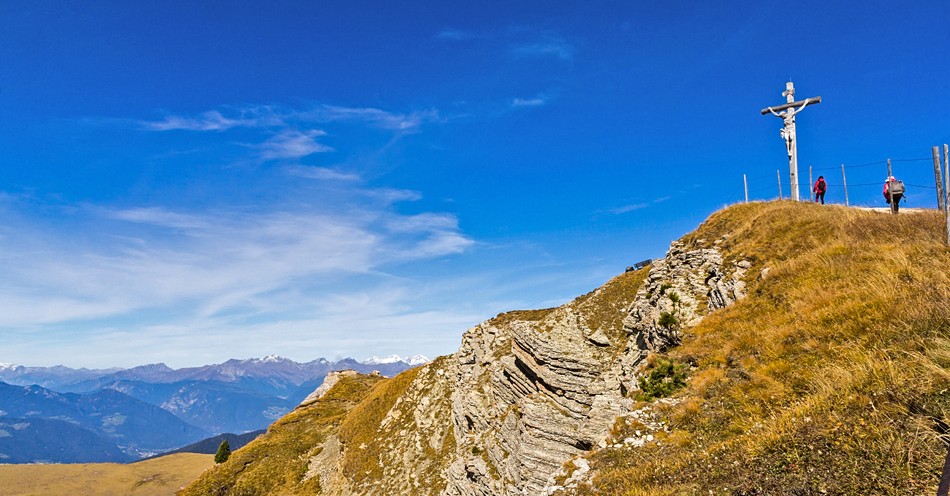Golgotha in the Bible - The Location of Jesus' Crucifixion
"Now it was the Preparation Day of the Passover, and about the sixth hour. And he said to the Jews, "Behold your King!" But they cried out, "Away with Him, away with Him! Crucify Him!" Pilate said to them, "Shall I crucify your King?" The chief priests answered, "We have no king but Caesar!" Then he delivered Him to them to be crucified. So they took Jesus and led Him away. And He, bearing His cross, went out to a place called the Place of a Skull, which is called in Hebrew, Golgotha, where they crucified Him, and two others with Him, one on either side, and Jesus in the center." ~ John 19:14-18 NKJV
Golgotha, a skull-shaped hill in biblical Jerusalem, is the place of Jesus’ crucifixion. It is mentioned in all four books of the Gospels. Also known as Calvary, this site was directly outside Jerusalem's boundaries where Jesus was crucified along with two thieves, one who confessed that Christ was God and was saved that day. Its traditionally revered location, distinguished by Queen Mother Helena, mother of Constantine the Great, in 325, is at the site of the Church of the Holy Sepulchre.
The Gospels use the Koine term Kraníon when mentioning the place outside Jerusalem where Jesus was crucified (Mark 15:22), "Then they brought Jesus to the place called Golgotha (which means: 'the place of a skull')." Kraníon is often translated as "Skull" in English, but more accurately indicates Cranium, the part of the skull enclosing the brain. In Latin, it is rendered Calvariae Locus, from which the English term Calvary derives. Hence, the different terms used when describing the place of Christ's crucifixion, such as "Golgotha and Calvary," come from the Hebrew and Latin translations, respectfully.
Where is the Location of Golgotha?
Golgotha, also named Calvary in Latin, is normally said to be connected to the traditional site of Christ's Crucifixion, now in the Church of the Holy Sepulchre in the Christian Quarter of Jerusalem. This church is within the walls of the Old City of Jerusalem. Below is a diagram from Wikipedia showing how the Church of the Holy Sepulchre was built on the place called Golgotha:

Map of Golgotha and More

(Map source: ESV Study Bible)
With regard to the position of the site of the Crucifixion (with which is bound up the site of the Tomb), the New Testament gives us no indication whatever; indeed, by those who abandon tradition, sites have been suggested on all sides of the city--and West Two views hold the field today:
(1) that the site of the Crucifixion, or at any rate that of the Tomb itself, is included within the precincts of the Church of the Holy Sepulchre; and
(2) that a prominent, rounded, grassy hill above the so-called "Grotto of Jeremiah," Northeast of the Modern Damascus Gate, has at least a very high probability of being the true site. It is impossible here to go into the whole question, which requires a minute and long elaboration, but an excellent review of the whole evidence may be consulted in "Golgotha and the Holy Sepulcher," by the late Sir Charles W. Wilson of PEF.
What does Golgotha mean?
According to Smith's Bible Dictionary, Golgotha is the Hebrew name of the spot at which our Lord was crucified. (Matthew 27:33; Mark 15:22; John 19:17) By these three evangelists, it is interpreted to mean the "place of a skull." Two explanations of the name are given:
(1) that it was a spot where executions ordinarily took place and therefore abounded in skulls or
(2) it may come from the look or form of the spot itself, bald, round and skull-like, and therefore a mound or hillock, in accordance with the common phrase --for which there is no direct authority-- "Mount Calvary." Whichever of these is the correct explanation, Golgotha seems to have been a known spot.
Different reasons have been suggested for the name Golgotha or "skull," such as:
It was a spot where skulls were to be found lying about and probably, therefore, a public place of execution. This tradition apparently originates with Jerome (346-420 AD), who refers to (3) to condemn it and says that "outside the city and without the gate there are places wherein the heads of condemned criminals are cut off and which have obtained the name of Calvary--that is, of the beheaded."
Several later writers have adopted this view. Against it may be urged that there is no shadow of evidence that there was any special place for Jewish executions in the 1st century and that, if there were, the corpses could have been allowed burial (Matthew 27:58; John 19:38), in conformity with Jewish law (Deuteronomy 21:23) and with normal custom (Josephus). [Excerpt from the ISBE]
Is Golgotha a Holy Place?
In short, yes. Many Christians of different denominations around the world travel to visit and revere the place where Christ was crucified, buried, and rose again located now at the Church of the Holy Sepulchre.
According to traditions dating back to the fourth century, it includes the two holiest sites in Christianity: the site where Jesus was crucified, at a site known as Golgotha, and Jesus's empty tomb, where He was buried and resurrected.
Can you visit Golgotha now?
In general, yes, you can visit the Church of the Holy Sepulchre, given that travel is permitted to Jerusalem at the time.
This church in the Christian Quarter of the Old City is where Christ was crucified, buried, and resurrected. This is one of the most venerated sites in Christendom and a major pilgrimage destination.
Where is the Cross of Christ's Crucifixion Today?
According to digismak.com,
Part of the cross awarded to Helena’s mission was taken to Rome (the other remained in Jerusalem) and, according to tradition, a large part of the remains are preserved in the Basilica of the Holy Cross in the Italian capital...In addition to the Basilica of the Holy Cross, the cathedrals of Cosenza, Naples and Genoa, in Italy; the monastery of Santo Toribio de Liébana (which has the largest piece), Santa Maria dels Turers and the basilica of Vera Cruz, among others, in Spain, claim to have a fragment of the log where Jesus Christ was crucified.
Read more about the Crucifixion of Jesus Christ, its Bible meaning, and its significance today!
Photo credit: GettyImages/yuelan
Christianity.com's editorial staff is a team of writers with a background in the Christian faith and writing experience. We work to create relevant, inspiring content for our audience and update timely articles as necessary.



